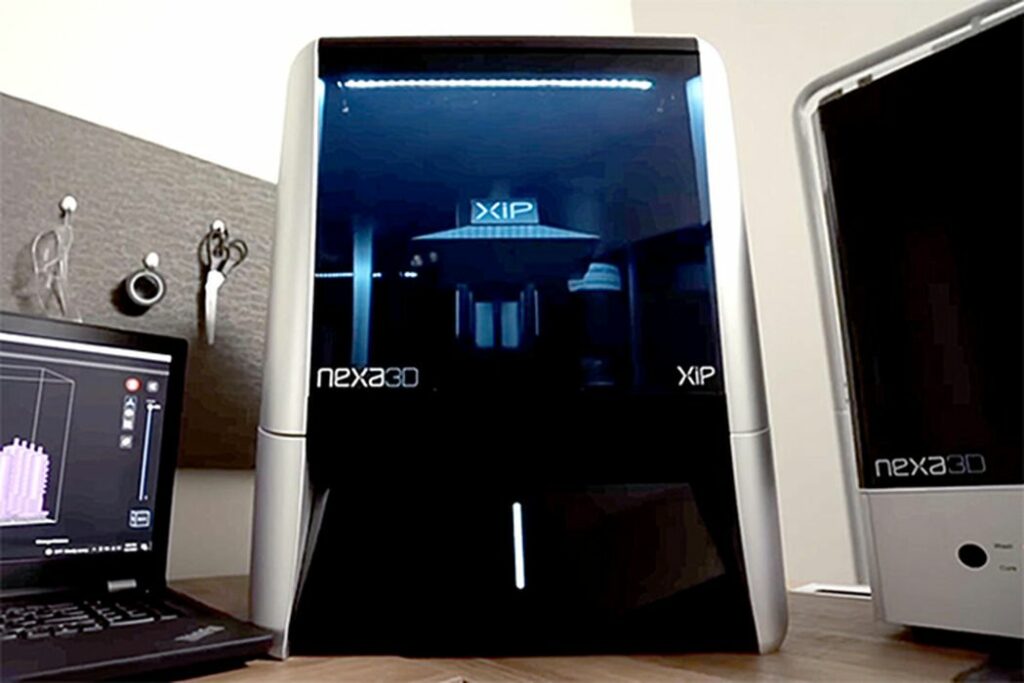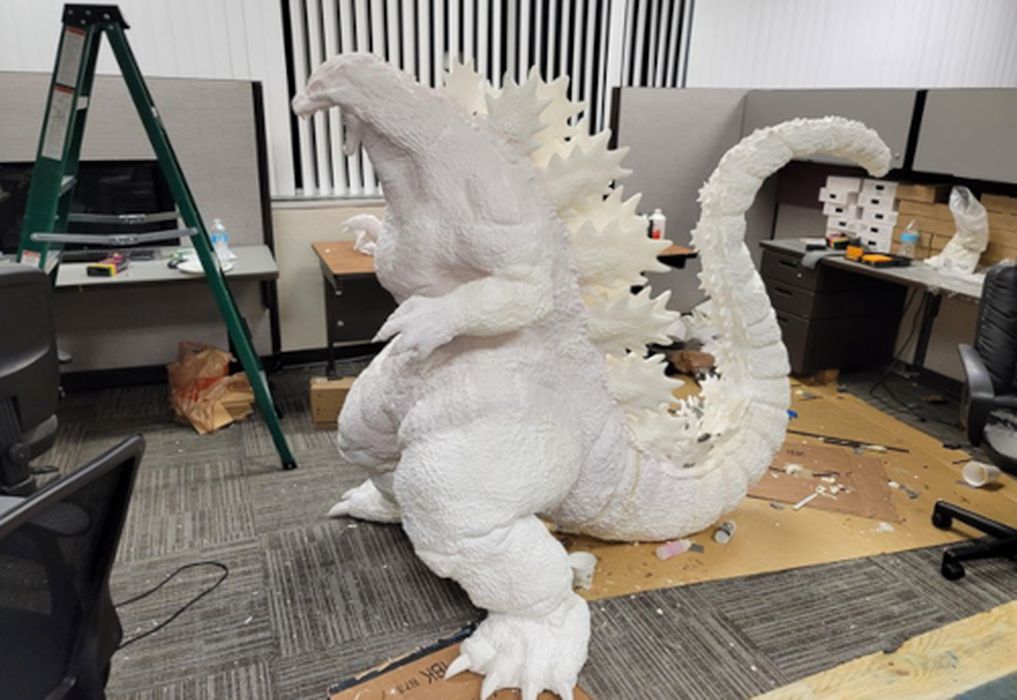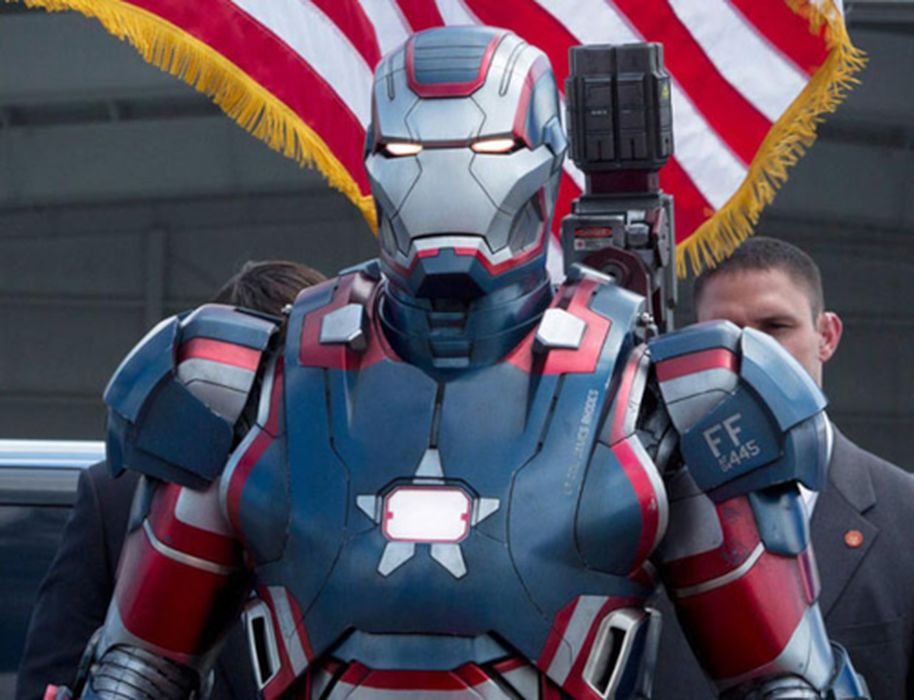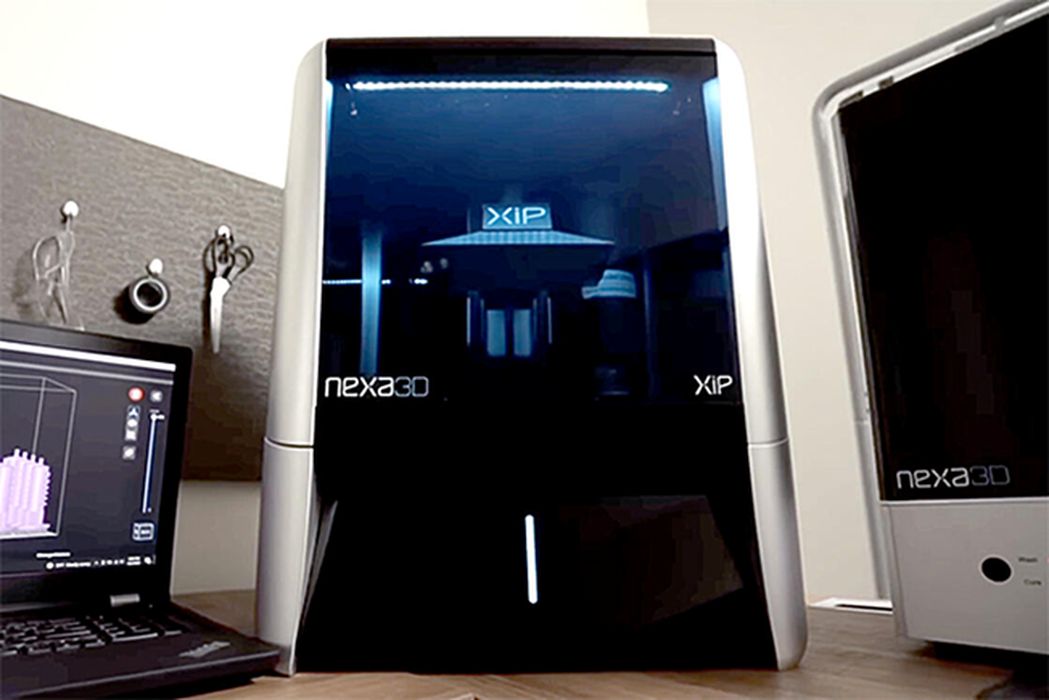
Charles R. Goulding and Preeti Sulibhavi examine the increasing use of 3D printing by movie-makers.
Nexa3D presented a webinar on June 30, 2022, featuring Robert Wiggins, a Hollywood prop maker who has worked on Transformers, Star Wars, and the Marvel film franchise as a contractor for Hasbro, as well as other TV shows and movies, that was titled “3D Printing Hollywood Props with Higher-Speed Resin.”
The webinar provided insight into the world of Hollywood prop design and fabrication. 3D printing is becoming ubiquitous in Hollywood. The flexibility to manufacture one-off parts quickly and at a lower cost makes the technology an invaluable tool. 3D printing is being used throughout Hollywood for designing and producing full-scale characters and props.
Nexa3D Webinar

The webinar on June 30th covered a variety of topics related to 3D printing props in Hollywood. There are a variety of ways in which 3D printing plays a role in Hollywood productions, including motion pictures and television.
Props such as helmets, body armor, weapons, tools, etc., are already being fabricated for Hollywood sets as props using 3D printers. “World Building” is a new layer to the utilization of 3D printing in Hollywood. For instance, the movie studio LAIKA, based in Portland, Oregon, has become famous for utilizing 3D printing in its stop-motion animation studio. The studio is best known for films like Coraline, ParaNorman, The Boxtrolls, Kubo and the Two Strings, and Missing Link. These movies would involve 3D printing characters in different positions and facial expressions, taking pictures of them, combining the pictures together, and adding voiceovers. Moreover, LAIKA created an entire “miniature” world for motion picture animation using 3D printers. While this is not new (Star Wars utilized miniatures in the 1970s), the extensive use of 3D printers to create these miniatures is a relatively new development.
Higgins expressed his experiences working with various printers (including FDM, SLA and mSLA) to create life-size props of Godzilla for practical movie effects. Higgins has also created life-size props for popular trade shows and events in the industry, including Comicon.
Movie production studios need to develop extravagant and realistic costumes to match their futuristic and otherworldly characters and stories. Physically building these props is often more expensive than 3D printing, which also delivers the precision and detail that audiences now come to expect.
In the past, studios could get by with less precise and imperfect costume and prop designs. Today, audiences expect movies and shows to be as lifelike as possible. 3D printers also come in handy for use in backstage tooling and repair items. 3D printers are quick and can create lightweight yet durable parts that can accommodate the hectic nature of a Hollywood set.

Higgins included an example of an original design he created for a game character that normally had her head covered with a helmet, but the game developers needed an original design for her face and features, so they came to Higgins.
After designing the character in design prep software, Higgins used a 3D printer, based on his design to create a mock-up of the character to show the developers. Higgins mentioned that some of the components of the props could take up to four weeks to complete, which is why he preferred using a Nexa mSLA 3D printer.
If these movie characters and sets were made by hand instead of 3D printed, these films would have taken much longer to create, cost a lot more, and would be of lesser quality.He indicated what materials, resins, and inks worked best with his 3D printers. LSPc 3D printing was also mentioned. And Nexa3D featured its new XIP 3D Printer which is a desktop version with high-speed resin and is ultrafast. It comes with design software capabilities for the desktop as well.
Movie studios and other prop-making companies involved in 3D printing may be eligible for the Research and Development Tax Credit.
The Research and Development Tax Credit
The now permanent Research and Development (R&D) Tax Credit is available for companies and startups developing new or improved products, processes and/or software.
3D printing can help boost a company’s R&D Tax Credits. Wages for technical employees creating, testing and revising 3D printed prototypes can be included as a percentage of eligible time spent for the R&D Tax Credit. Similarly, when used as a method of improving a process, time spent integrating 3D printing hardware and software counts as an eligible activity. Lastly, when used for modeling and preproduction, the costs of filaments consumed during the development process may also be recovered.
Whether it is used for creating and testing prototypes or for final production, 3D printing is a great indicator that R&D Credit eligible activities are taking place. Companies implementing this technology at any point should consider taking advantage of R&D Tax Credits.
Conclusion
One of the advantages or benefits of utilizing 3D printing in the Hollywood prop industry is that it improves the supply chain sustainability by digitizing various aspects, or components, of the supply chain. The webinar delved into several characters that were created with 3D printers including Bumblebee from Transformers (which Higgins created), which made 3D printing relatable and enjoyable to the participants in the webinar. We look forward to more such presentations from Nexa3D.

